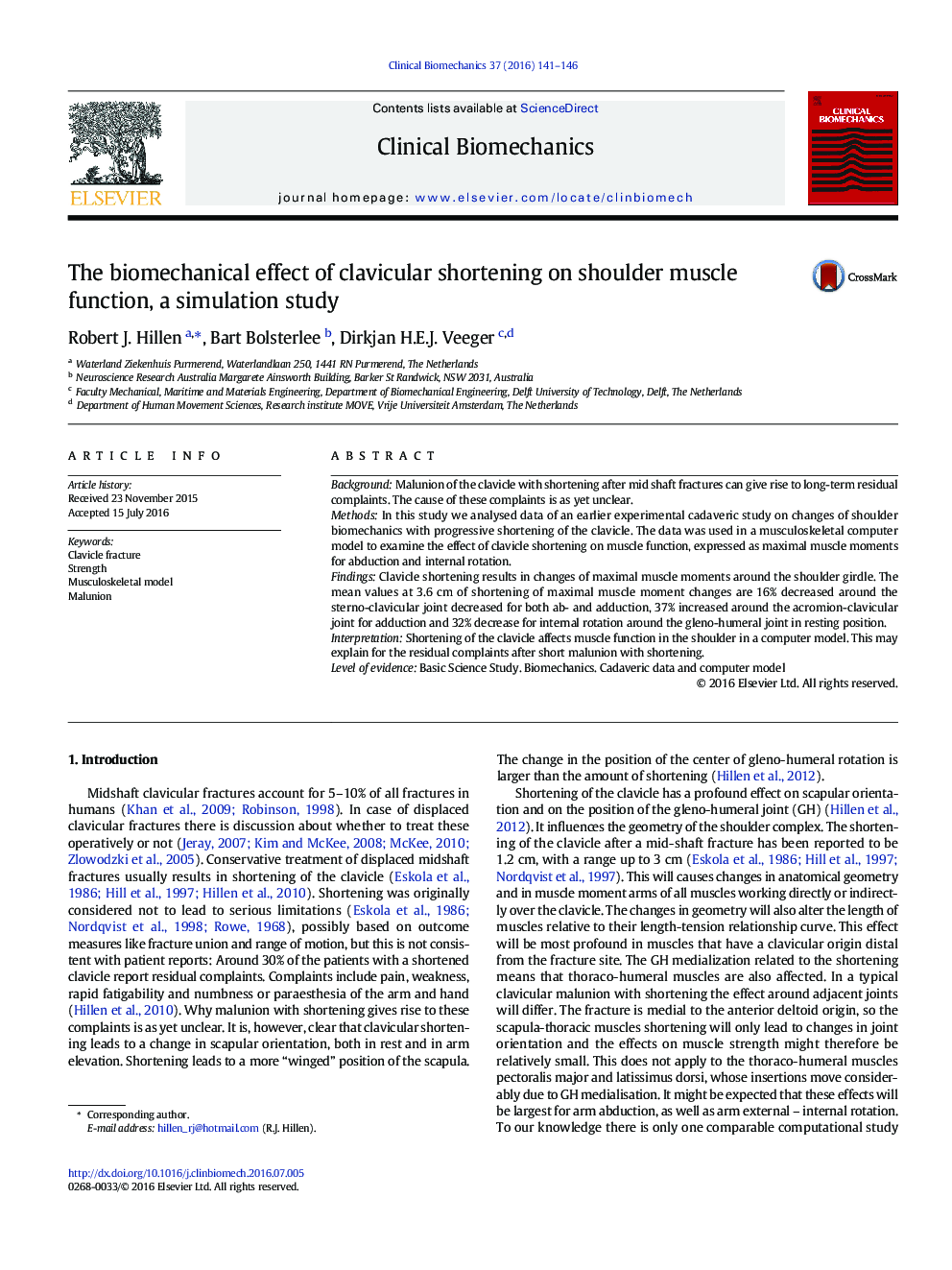| Article ID | Journal | Published Year | Pages | File Type |
|---|---|---|---|---|
| 4050028 | Clinical Biomechanics | 2016 | 6 Pages |
•Simulation study with a shoulder model on alteration of biomechanics of shoulder function due to shortening of the clavicle.•Clavicle shortening results in reduced maximal muscle moments around the sterno-clavicular joint for both ab- and adduction•Also there is a decreased maximal moment for internal rotation of the gleno-humeral joint in resting position.•Clavicle shortening leads to loss of stength of the shoulder
BackgroundMalunion of the clavicle with shortening after mid shaft fractures can give rise to long-term residual complaints. The cause of these complaints is as yet unclear.MethodsIn this study we analysed data of an earlier experimental cadaveric study on changes of shoulder biomechanics with progressive shortening of the clavicle. The data was used in a musculoskeletal computer model to examine the effect of clavicle shortening on muscle function, expressed as maximal muscle moments for abduction and internal rotation.FindingsClavicle shortening results in changes of maximal muscle moments around the shoulder girdle. The mean values at 3.6 cm of shortening of maximal muscle moment changes are 16% decreased around the sterno-clavicular joint decreased for both ab- and adduction, 37% increased around the acromion-clavicular joint for adduction and 32% decrease for internal rotation around the gleno-humeral joint in resting position.InterpretationShortening of the clavicle affects muscle function in the shoulder in a computer model. This may explain for the residual complaints after short malunion with shortening.Level of evidenceBasic Science Study. Biomechanics. Cadaveric data and computer model
